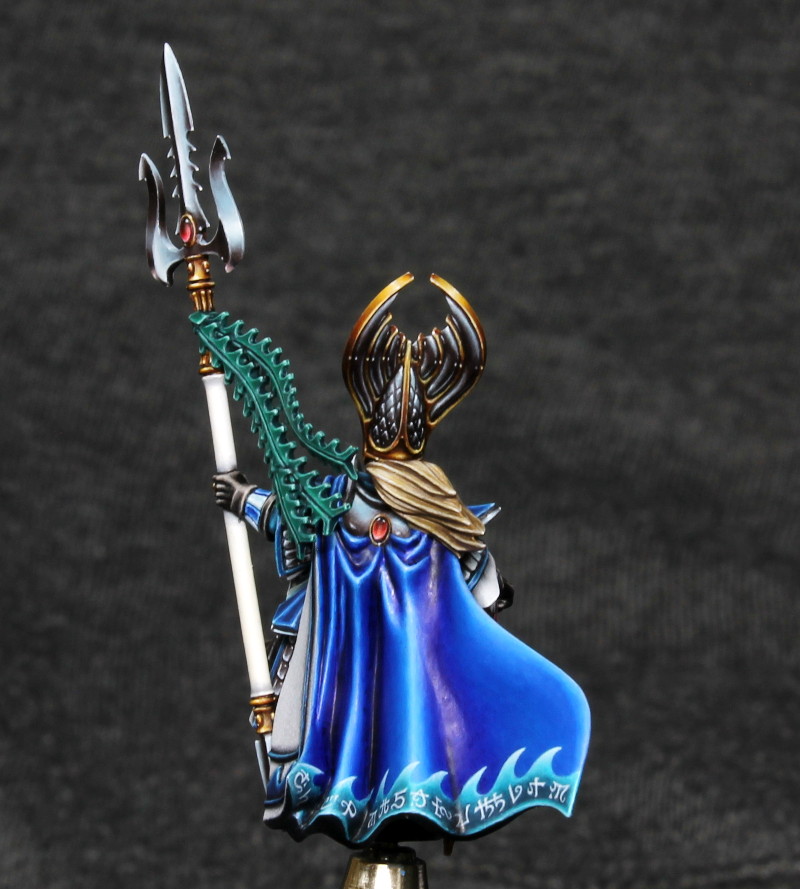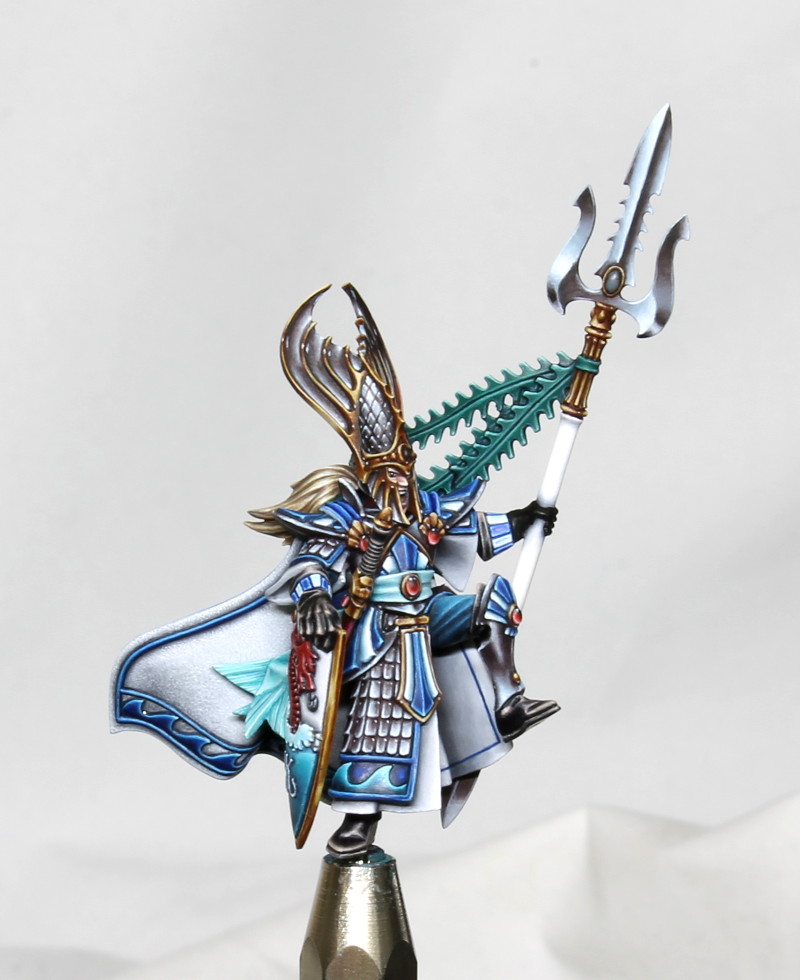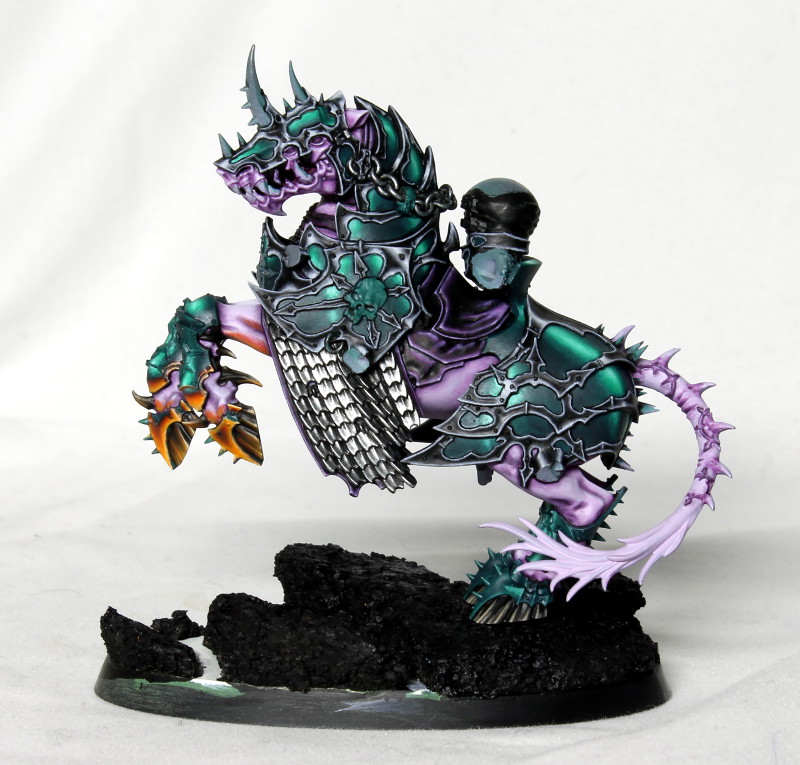Firstly, some good news – my heroes and skeletons have been included in the Shapeways gift guide, so any order including them qualifies for free shipping in the US and EU using the code SHIP4FREE until November 20th!
And now to business:
I actually remembered to take some photos while I was painting my Warriors of Darkness, so I thought I’d post a step by step guide. I’m using one of the savages here since it contains areas of both flesh and armour.
I’ll just explain briefly what I did in each step rather than going into detailed discussion, but the approach is very similar to my recent Dark Sword painting tutorial. I’ve tried to keep the lighting level consistent but because I painted the miniatures over a few days there is a little variation, so apologies for that. My paints are a mixture of different vintages – sadly some of them are no longer available but it should be possible to find equivalents with a little googling!
I find it great fun painting these 15 mm miniatures. The smaller size means I can turn them out in just a few hours each without compromising on quality. I exaggerated all the details during sculpting, so they’re actually less fiddly than a lot of 28 mm minis I’ve come across.

I started by removing the remaining supports and gently sanding away any print artifacts with 800 grit sandpaper. The miniature was washed in warm soapy water and glued to a penny with a mixture of sand and small pieces of slate applied over a thin layer of milliput.
(There’s another post here where I discuss the initial preparation of these miniatures in a little more detail.)

I painted the base using gorthor brown and cloudy grey with washes of agrax earthshade and nuln oil. I then drybrushed with graveyard earth, karak stone and longbeard grey.
The flesh was basecoated with 2:1 fair highlight and rakarth flesh. I didn’t use any primer – the plastic takes the paint well.

I shaded the flesh with a 1:1:1 mix of rakarth flesh, cloudy grey and rhinox hide with a little reikland fleshshade added. A deeper shade of 1:1:1 cloudy grey, rhinox hide and black was then applied to the deepest recesses.

The shading was neatened up a bit where necessary with a re-application of the base coat. I then added a layer of 1:1 creamy ivory and white.

The armour was base coated with khorne red.

A highlight of 1:1 squig orange and white was applied to the armour.
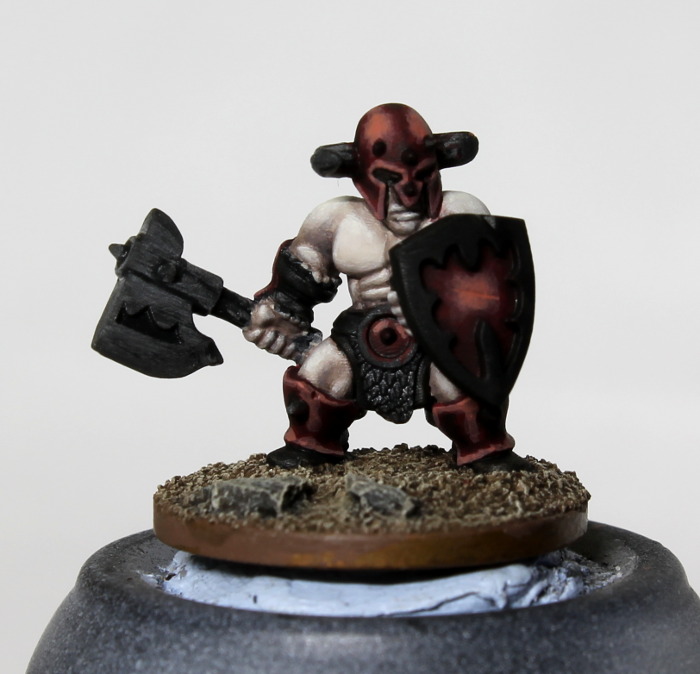
The armour was shaded with a khorne red and black mix, then pure black in the deepest recesses.

A second highlight of white with a little of the previous highlight mix added.

The armour was then glazed with evil sunz scarlet and khorne red.

The axe handle was painted with khemri brown, shaded with a mix of desert yellow and black and highlighted with yellowed bone.
The edge of the shield was painted with abaddon black and highlighted with cloudy grey. The axe was base coated with cloudy grey.

The axe was highlighted with a 1:1 mix of rainy grey and white, with a touch of temple guard blue added.

The axe was shaded with a mix of cloudy grey and black, with a little mephiston red added. Pure black was used in for the deepest shadows.

The axe was highlighted again with white and a little of the previous highlight mix added.

The highlight paints were used to create scoring on the axe blade (using a gentle touch and a brush with a very good point). Small pure white highlight spots were added and the ground reflections were glazed with rainy grey with a small amount of dark flesh added.

A second highlight of 1:1 rainy grey and white was applied to the shield edge and a black glaze was used to neaten it up. The boots and the loin cloth were painted the same way.
The fur was painted with rhinox hide, then highlighted over a progressively smaller area with bestial brown, vomit brown and yellowed bone.
The leather straps were painted with rhinox hide, highlighted with 1:1 ratskin flesh and tanned skin and shaded with black.

The brass was base coated with 1:1 dark flesh and vermin brown, highlighted with 1:1 orange brown and creamy ivory, then with more creamy ivory. Shades were rhinox hide and black. The base coat was used for glazing.
The horns were painted with creamy ivory then balor brown, rhinox hide and black working towards the ends so each colour covered a smaller area than the last.
The armour was finished with small white highlights and some extra chips painted onto the helmet.
The eyes were painted and the lower lip glazed with a little khorne red added to the flesh tone highlight.
Finally the edge of the penny was painted black and a tuft from MiniNatur added. Done!
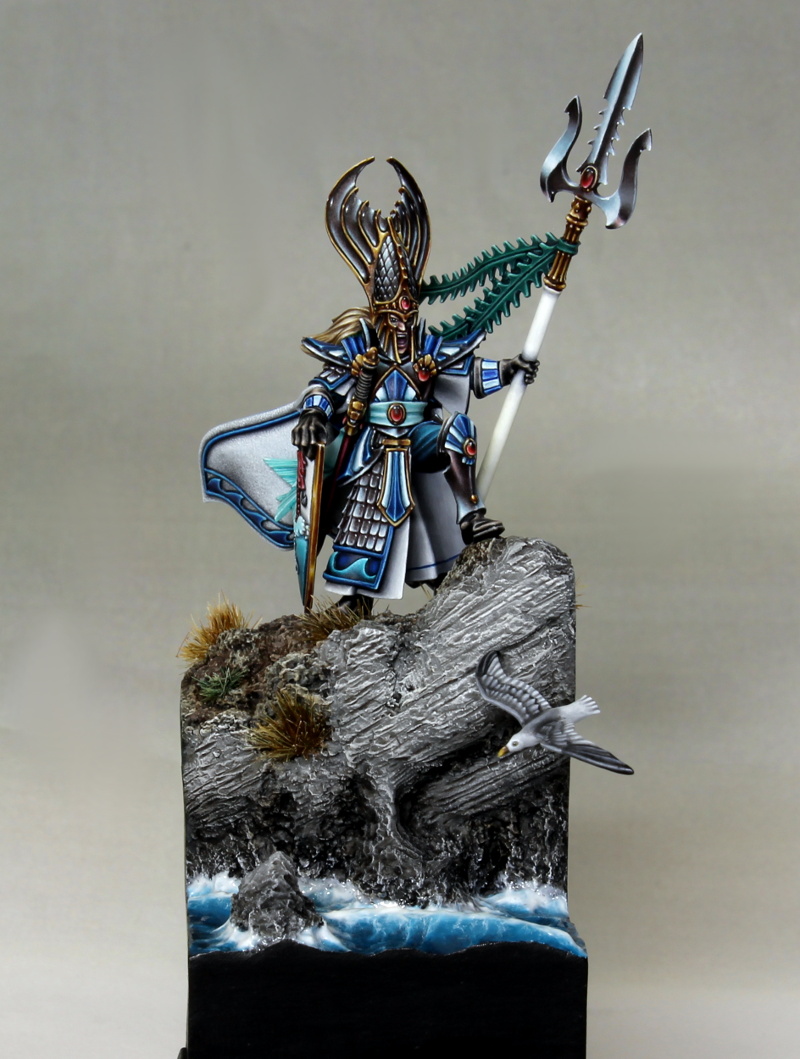









 For the loincloth I wanted to experiment with combining some texturing with freehand as it’s not something I’ve done before.
For the loincloth I wanted to experiment with combining some texturing with freehand as it’s not something I’ve done before.

